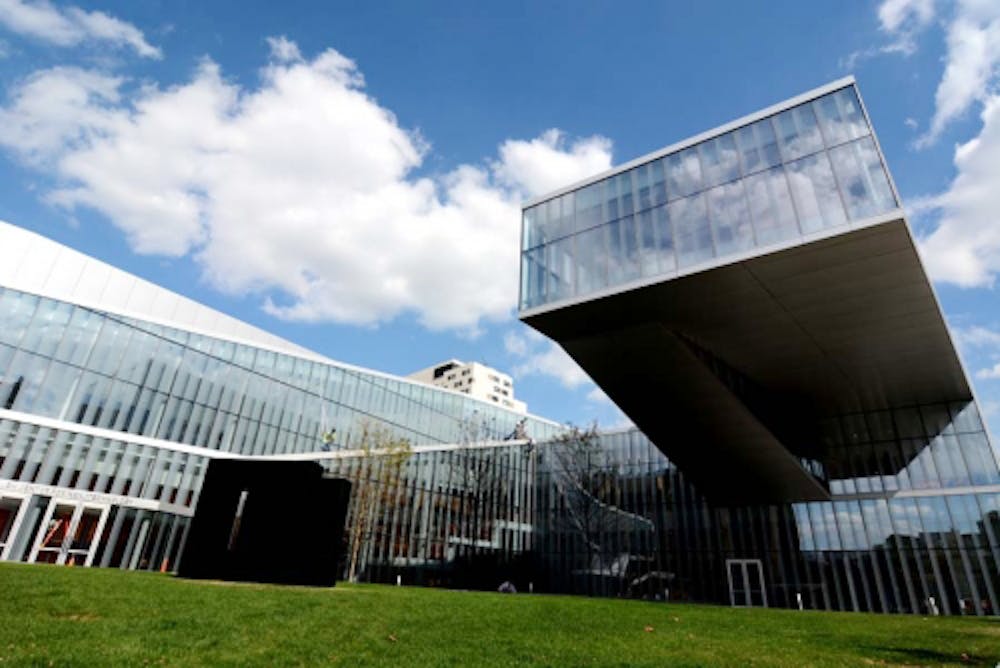Penn’s recently opened Krishna P. Singh Center for Nanotechnology, designed by Marion Weiss and Michael Manfredi, is an impressive structure. Standing on Walnut Street between 33rd and 32nd Streets, the building’s curtain wall glass facade beautifully reflects sunlight during the day and has an orange glow at night as it filters out UV light. The building’s deconstructivist shape resembles light boxes stacked in an L–formation. Its architectural sophistication is most evident in the floating cantilever facing Walnut Street, which seems to defy gravity, supported without the need for columns.
Promising to bring the University into contemporary times, the Singh Center stands as a visually compelling piece of architecture that enriches the urban context on campus. The entrance pathway on 32nd and Walnut resembles a gateway and leads diagonally to the core of the Singh Center. The building’s location and orientation take a nod to the rest of the Engineering School. The top level enjoys one of the fullest views in all in University City. Housing the most advanced equipment for nanotechnology research, the Singh Center will combine resources of the College and SEAS in order to promote interdisciplinary research.
While the Singh Center stands as an architectural landmark on Penn’s campus and in the city of Philadelphia, its inconsistency with the rest of Penn's structures is a strong drawback. The buildings that dot the landscape between 33rd and 41st and Chestnut and Pine have maintained some of the traditionalism the University stands for. With the use of similar colors and materials, most campus buildings look fairly similar. Nonetheless, the Singh Center is so visually unrelated to the rest of campus that it seems more fitting for Center City.
There is a perplexing facet to the Singh Center: the concept proposal prioritized social interaction. The building has multilevel seating areas between the three levels; the elongated staircase immediately draws people in and controls circulation in a sophisticated manner. Paradoxically, the Singh Center identifies modern science as a social discipline—if observing matter at the atomic and molecular level could ever be social. Perhaps this is the most revolutionary aspect of the Singh Center. At the forefront of science and technology, the structure is redefining nanotechnology as a discipline. Architecturally, the Singh Center does the inverse of nanotechnology; it looks outwards while the latter looks inward.

